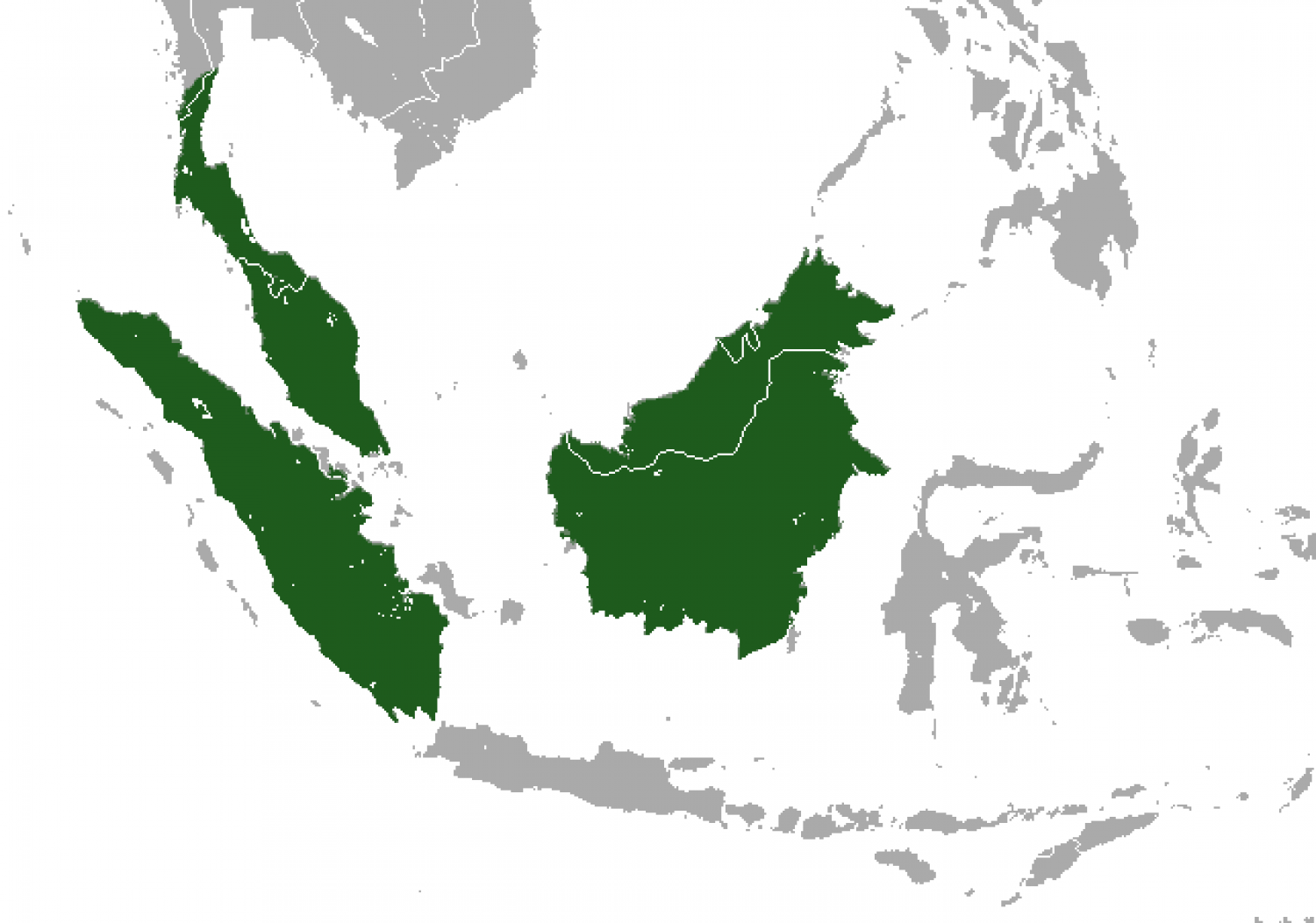Species of Thailand
Moonrat
Echinosorex gymnura
Thomas Stamford Raffles, 1822
The moonrat (Echinosorex gymnura) is a species of mammal in the Erinaceidae family. It is the only species in the genus Echinosorex. The species name is sometimes given as E. gymnurus, but this is incorrect.
Description
The moonrat has a distinct pungent odour with strong ammonia content, different from the musky smell of carnivores. There are two subspecies: E. g. gymnura is found in Sumatra and the Thai-Malay Peninsula; E. g. alba is found in Borneo. In the former the head and frontal half of the body are white or grey-white; the remaining is mainly black. The latter subspecies is generally white (alba means white in Latin), with a sparse scattering of black hairs; it appears totally white from a distance. Those from western Borneo tend to have a greater proportion of black hairs than those from the east, but animals from Brunei appear intermediate. Largely white E. g. gymnura also occur, but they are rare.
Head and body length is 320 - 400 mm, tail length is 205 - 290 mm, hind foot length is 65 - 75 mm and weight is 870 - 1100 g. The dental formula is . It is possibly the largest member of the Erinaceomorpha order, although the European hedgehog likely weighs a bit more at 1000 g and up to 2000 g.
Distribution
Moonrats inhabit most jungle terrain in southern Myanmar, Peninsular Thailand, Peninsular Malaysia, Borneo and Sumatra. Although they are closely related to the short-tailed gymnure (Hylomys suillus) and to the hedgehog, full grown specimens more closely resemble large rats, with which they share similar habits and ecological niches. In Borneo, they occur at many sites throughout the lowlands and up to 900 m in the Kelabit Highlands. They appear to be absent or rare in some localities, possibly due to a shortage of suitable food.
Ecology and habitat
Moonrats are nocturnal and terrestrial, lying up under logs, roots or in abandoned burrows during the day. They inhabit moist forests including mangrove and swamp forests and often enter water. In Borneo, they occur mainly in forests, but in peninsular Malaysia they are also found in gardens and plantations. They feed on earthworms and various small animals, mostly arthropods.
Behavior and reproduction
Moonrats release strong odours with a strong ammonia content to mark the edges of their territories and warn other moonrats to stay away with threatening hisses also to ward off predators. Adults live alone. When they are preparing to have young, they will make nests mostly from leaves. Females usually have two babies at one time.
Diet
The moonrat is an omnivore, known to eat a wide range of invertebrates—for example, worms, insects, crabs and other invertebrates found in moist areas. They will also eat fruit, and occasionally frogs or fish.
Lifespan
The lifespan of the moonrat is up to five years.
Conservation status
The moonrat is not considered a threatened species. The main threat to the moonrat is deforestation activities due to human development for agriculture, plantation, and commercial logging. Moreover, other demands from Penan in Borneo for food and traditional medicinal contribute to decreasing numbers of moonrats in Borneo. The species is also found in protected areas, including Matang National Park and Kuching Wetlands National Park. Its IUCN status is Least Concern.
Economic importance
In the United States of America, members of the family Erinaceidae are commonly kept as pets. The Penan in Borneo used to trade moonrat meat for other foods and goods among themselves and for money.
This article uses material from Wikipedia released under the Creative Commons Attribution-Share-Alike Licence 3.0. Eventual photos shown in this page may or may not be from Wikipedia, please see the license details for photos in photo by-lines.
Scientific classification
- Kingdom
- Animalia
- Phylum
- Chordata
- Class
- Mammalia
- Order
- Erinaceomorpha
- Family
- Erinaceidae
- Genus
- Echinosorex
- Species
- Echinosorex gymnura
Common names
- English:
- Gymnure
- Moonrat
Synonyms
- Echinosorex minor, Marcus Ward Lyon, Jr. (1909)
- Echinosorex birmanica, Édouard Louis Trouessart (1879)
- Echinosorex candida, Albert Charles Lewis Günther (1876)
- Echinosorex borneotica, Leopold Fitzinger (1868)
- Echinosorex rafflesii, René-Primevère Lesson (1827)
Conservation status

Least Concern (IUCN3.1)
Photos
Please help us review our species pages if wrong photos are used or any other details in the page is wrong. We can be reached via our contact us page.
Range Map

- Bang Lang National Park
- Hala-Bala Wildlife Sanctuary
- Kaeng Krachan District, Phetchaburi
- Kaeng Krachan National Park
- Khao Phra Thaeo Wildlife Sanctuary
- Khao Sok National Park
- Kui Buri National Park
- Lam Nam Kra Buri National Park
- Mueang Ranong District, Ranong
- Pak Tho District, Ratchaburi
- Royal Chumphon Forest Park
- Sadeth Naikrom - Krom Luang Wildlife Sanctuary
